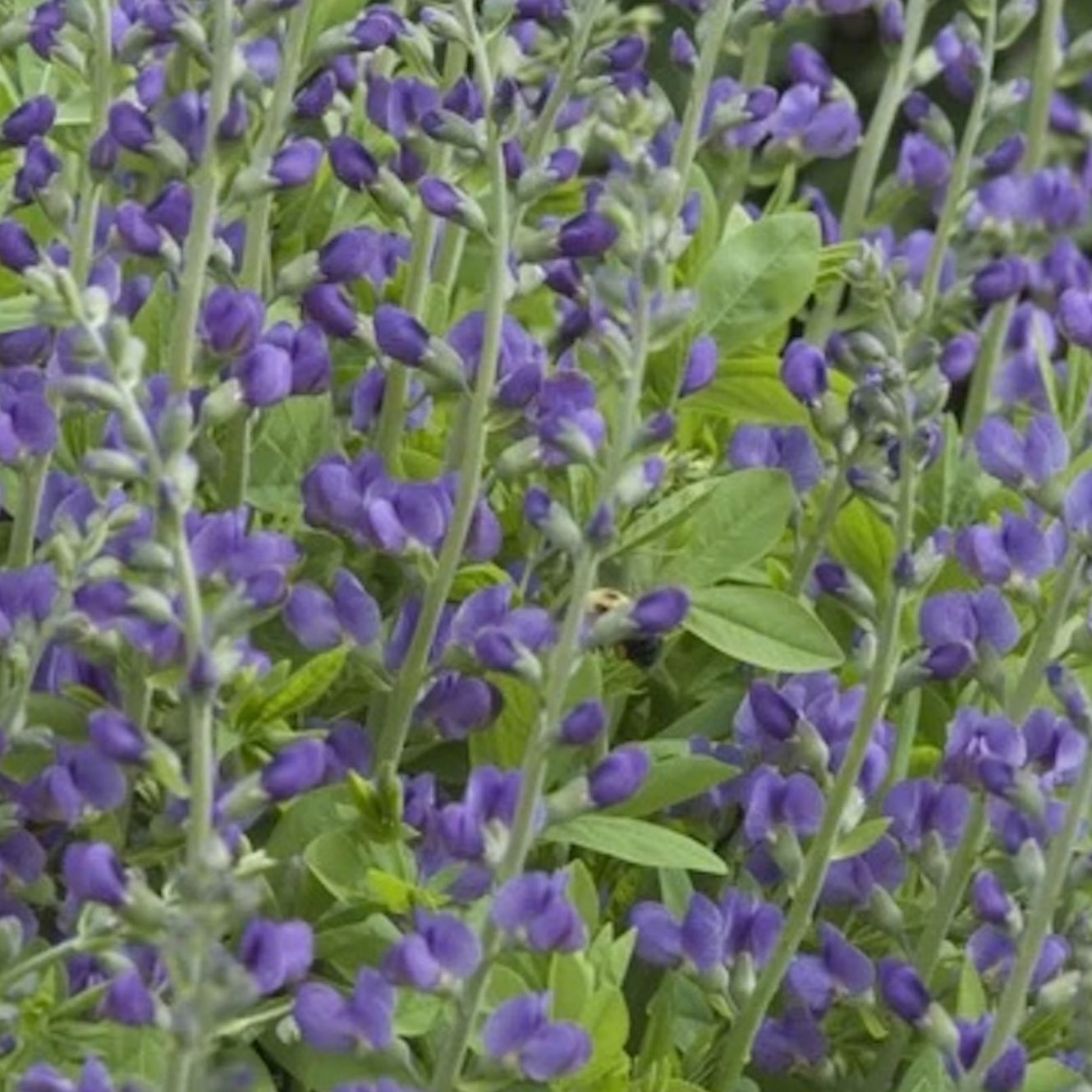Blue Flowers For Native Gardens: 7 Native Blue Flowers To Grow
Blue might not seem like the sort of color that crops up regularly in a native garden, but you’d be amazed! Here we round up the loveliest native blue flowers you can try


Hopefully you already know that native plants can play a vital role in your yard’s ecosystem. You may be thinking of a host of colors – but have you made room for native blue flowers yet?
Native plants are an invaluable source of food, shelter and habitat for local wildlife species. Such plants are prized for their beauty and the ease with which they can be grown.
Vibrant shades of blue may sound unrealistic, but these blooms can be some of the most knockout native flowers – and they continue to gain popularity in garden design.
So which blue native plants are the best? Read on for some of the best true blues to grow in your garden…
Choosing the Best Native Blue Flowers
Blue native flower choices are exceptionally popular. Native species perform best as they are likely to be well-adapted to growing conditions within the region. A few can be some of the longest flowering perennials you can grow.
Many natives also demonstrate increased tolerance or resistance to pests and disease. Here are some of the most common blue-flowering native plants, suitable for landscape and container growing.
1. Blue False Indigo

A long-lived perennial, false indigo (Baptisia australis) plants are among the best dark blue flowers for native gardens. Tall flower stems rise from attractive foliage, featuring unique pea-like blossoms.
Sign up for the Gardening Know How newsletter today and receive a free copy of our e-book "How to Grow Delicious Tomatoes".
False indigo can be found growing in the wild near meadows, fields, and even along the edges of streams. Garden plants will grow best in full sun. False indigo is hardy to USDA zones 3-9.
2. Blue Cardinal Flower

A popular choice for pollinator beds, blue cardinal flower (Lobelia siphilitica) attracts bees, butterflies and numerous other beneficial species. Large plants that reach 4 feet (1.2m) at maturity bloom prolifically through summer.
Blue cardinal flowers generally prefer moist conditions, thriving in partly shaded beds. These plants may spread where conditions are ideal, however, the species is not considered invasive. Also called lobelia, they are hardy to USDA zones 3-9.
3. Mealycup Sage

Mealycup sage (Salvia farinacea) is another perennial frequently used to create a wildlife habitat. Highly-saturated flower spikes serve as a veritable magnet to hummingbirds.
Growers living in warmer regions can expect established plants to begin blooming in spring and continue through summer. These plants can also be used in containers, or grown as annuals outside of their native range. Mealycup sage, also known as blue salvia, is hardy to USDA zones 7-10.
4. Blue Flag Iris

Irises are among the best plants for light blue flowers in native garden spaces. Blue flag iris (Iris versicolor) is especially well-adapted to growth where conditions are wet. Most can be found growing along the edges of ponds, streams and even ditches, but home gardeners can also make use of the plant, provided that beds are kept consistently moist. Blue flag iris is considered hardy to USDA zones 3-9.
5. Virginia Dayflower

A good choice for naturalized beds and wetland spots, Virginia dayflower's (Commelina virginica) delicate light blue flowers are treasured in a native garden. These plants are at home where conditions remain moist. This includes soils that remain saturated and those that experience standing water. Established plants are robust, spreading quickly via rhizomes. Virginia dayflower plants are hardy to USDA zone 5.
6. Colorado Blue Columbine

Like most columbines, Colorado blue (Aquilegia coerulea) is most frequently planted for its unique, star-like blooms. Well-suited as a small blue flower for native gardens, the species can also be grown in pots and containers.
Delicate buds begin to open in spring and continue through midsummer. Their interesting bi-color appearance offers further ornamental appeal, luring pollinators with ease. Colorado blue columbine plants are some of the most cheerful columbine varieties, hardy to USDA zones 3-9.
7. Texas Bluebonnet

As its name would imply, Texas bluebonnet (Lupinus texensis) plants are most likely to be seen throughout Texas and certain parts of Oklahoma. The perennial can be found growing in large numbers across fields, meadows and along the edges of roadways. These plants are well-adapted to a wide range of soil types, including those with poor fertility. Blue bonnets will grow best in full sun, throughout USDA zones 4-8.
Frequently Asked Questions
Which Native Blue Flowers are Easiest to Grow?
Determining which native blue flower is easiest to grow depends greatly on one’s own space. Regional conditions play a major role in plant hardiness and adaptability. Other cultural aspects for consideration include the amount of light needed in relation to the planting site, moisture levels, and even soil fertility.
Which Blue Flowers are Invasive?
Though most native species behave well in the landscape, some may spread aggressively. Careful research before planting can help you avoid invasive species. Local rules and regulations regarding the cultivation of such plants can offer great guidance. Extension offices or agricultural agents may also be helpful as a means to avoid invasive species and noxious weeds.
This article features products available from third party vendors on the Gardening Know How Shop.

Tonya Barnett has been gardening for 13 years. Flowers are her passion. She has transformed her backyard into a cut flower garden, which she regularly chronicles on her YouTube channel http://www.youtube.com/@tonyawiththeflowers.

